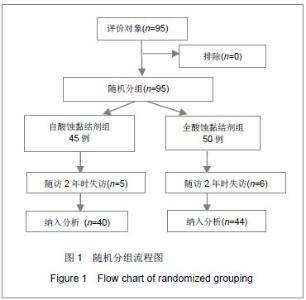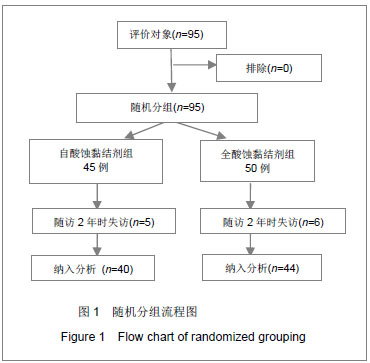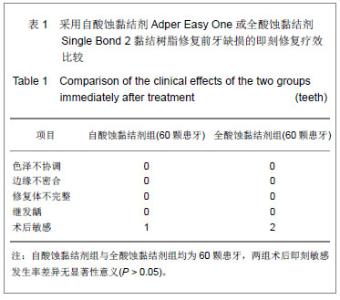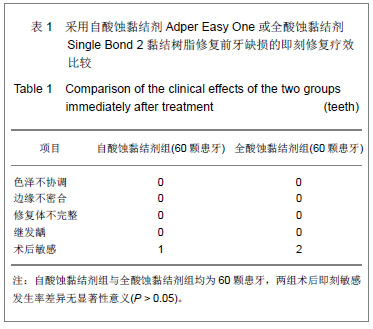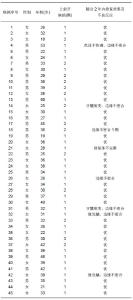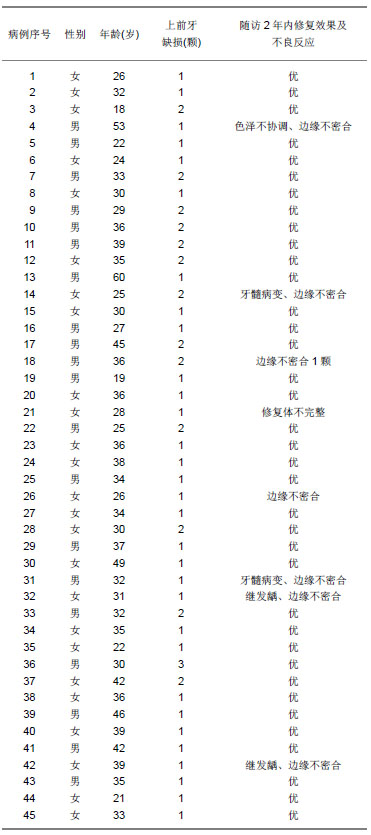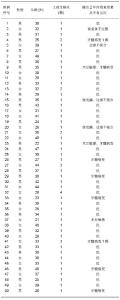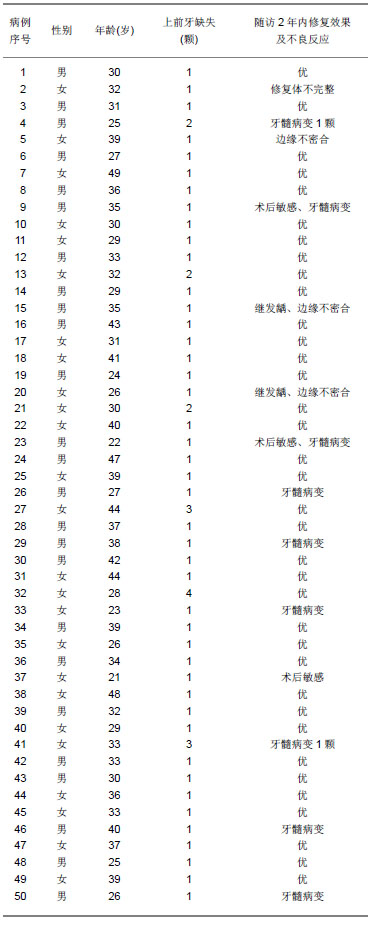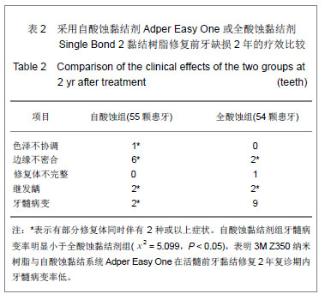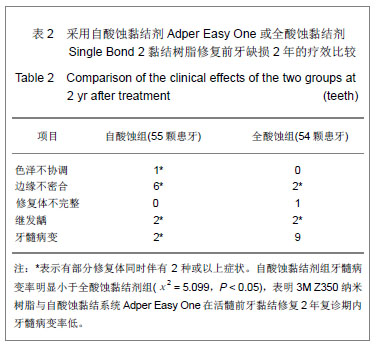| [1]Perdigão J,Dutra-Corrêa M,Saraceni S,et al.Randomized Clinical Trial of Two Resin-Modified Glass Ionomer Materials:1-year Results.Oper Dent.2012;37(6):591-601.[2]Maserejian NN,Trachtenberg FL,Hauser R,et al.Dental composite restorations and neuropsychological development in children: treatment level analysis from a randomized clinical trial. Neurotoxicology. 2012;33(5):1291-1297. [3]Popoff DA,Gonçalves FS,Magalhães CS,et al.Repair of amalgam restorations with composite resin and bonded amalgam: a microleakage study. J Dent Res. 2011;22(6):799-803.[4]Kubo S,Kawasaki A,Hayashi Y.Factors associated with the longevity of resin composite restorations.Dent Mater J. 2011; 30(3):374-383.[5]Goncalves FS,Castro CD,Bueno AC,et al.The short-term clinical performance of a silorane-based resin composite in the proximal contacts of class II restorations. J Contemp Dent Pract.2012;13(3):251-256.[6]Van Dijken JWV,Pallesen U.Clinical performance of a hybrid resin composite with and without an intermediate layer of flowable resin composite: a 7 years evaluation. Dent Mater. 2011;27:150-156.[7]Garoushi S,Vallittu P,Lassila LVJ.Fracture toughness, compressive strength and load-bearing capacity of short glass fiber-reinforced composite resin. Chin J Dent Res. 2011;14:15-19.[8]Burke FJ,Crisp RJ,James A.Two year clinical evaluation of a low-shrink resin composite material in UK general dental practices.Dent Mater.2011; 27(7):622-630. [9]de Azevedo Miranda D,dos Santos Bertoldo CE,Ambrosano GM.Effect of curing light distance and different mouthwashes on thesorption and solubility of a nanofilled composite. Eur J Esthet Dent. 2013;8(1):88-102.[10]Lee DS,Jeong TS,Kim S,et al.Effect of dual-peak LED unit on thepolymerization of coinitiator-containing composite resins. Dent Mater J.2012;31(4):656-661. [11]Rosa RS,Balbinot CE,Blando E,et al.Evaluation of mechanical properties on three nanofilled composites. Stomatologija.2012;14(4):126-130.[12]Harleen N,Ramakrishna Y,Munshi AK.Enamel deproteinization before acid etching and its effect on the shear bond strength--an in vitro study.J ClinPediatr Dent. 2011;36(1):19-23.[13]Joulaei M,Bahari M,Ahmadi A,et al.Effect of Different SurfaceTreatments on Repair Micro-shear Bond Strength of Silica- and Zirconia-filledComposite Resins. J Dent Res Dent Clin Dent Prospects. 2012;6(4):131-137.[14]Yun DI,Ku RM,Son SA,et al.Influence of a blue DPSS laser on specimen thickness of composite resins.Photomed Laser Surg. 2012;30(9):536-542.[15]中华人民共和国国务院.医疗机构管理条例.1994-09-01.[16]刘强,葛绍群,高文达,等.3M纳米树脂用于前牙美容修复的临床研究[J].临床医药实践,2010,9(19):1313-1314.[17]吴胜,张华,劳文茵.Z350纳米复合树脂修复前牙间隙的效果观察[J].右江民族医学院学报,2011,33(2):197-198.[18]Ryge G. Clinical criteria. Int Dent J. 1980;30(4):347-358. [19]马福军,王占红.复合树脂充填材料修复牙体缺损的应用价值及临床评价[J].中国组织工程研究与临床康复,2011,15(16): 2957-2960.[20]罗娟,王新知,刘学恆.纳米增韧牙科复合树脂的研究[J].临床口腔医学杂志,2007, 23(7): 394-396.[21]Palaniappan S,Elsen L,Lijnen I, et al. Nanohybrid and microfilled hybrid versus conventional hybrid composite restorations: 5-year clinical wear performance.Clin Oral Investig. 2012;16(1):181-190. [22]Mitra SB,Wu D,Holmes BN.An application of nanotechnology in advanced d ental materials.J Am Dent Assoc.2003;134(10): 1382-1390.[23]邱自力.3 种材料修复楔状缺损的疗效观察[J].南昌大学学报:医学版,2011,51(6):49-51. [24]赵泓霖.P60树脂、Z350纳米树脂与“P60树脂加涂窝沟封闭剂”对后牙Ⅰ类洞修复效果比较[J].昆明医学院学报,2011,32(6): 133-135.[25]陈曦,陈作良,陈芳.纳米复合树脂的研究进展[J].临床口腔医学杂志, 2003,12(30):754-755. [26]昭荣,徐国财.立体光造型纳米复合树脂的制备[J].塑料工业, 2005, 33(4): 67-69.[27]陈维旭,苏怡.Z350纳米树脂和Z100复合树脂牙体充填术后的敏感性评价[J].中国组织工程研究与临床康复,2007,11(44): 8926-8927. [28]王喆,邱建平,杭东跃.四种复合树脂材料与牙体间边缘密合度的研究[J].临床口腔医学杂志,2012,28(6):355-357.[29]孙丽华,袁杰,张志慧,等.影响复合树脂微渗漏的多因素分析[J].口腔医学研究,2010,26(1):89-91. [30]Kasraie S,Azarsina M,Khamverdi Z,et al.Microleakage of dual-cured adhesive systems in class v composite resin restorations.J Dent (Tehran).2012;9(2):99-106.[31]师保江,张琛,侯本祥.自酸蚀和全酸蚀粘接系统粘接界面的形态学观察[J]. 首都医科大学学报,2006,27(2) : 257-260. [32]韦曦,何庆银,凌均棨,等.自酸蚀粘接剂Adper Easy One 的临床研究[J].中华口腔医学研究杂志:电子版,2012,6(4):348-352.[33]Unemori M,Matsuya Y,Akashi A,et al.Composite resin restoration and postoperative sensitivity:clinical follow-up inan undergraduate program.J Dent.2001;29(1):7-13.[34]Cox CF,White KC,Ramus DL,et al.Reparative dentin: factors affecting its depos ition.Quintessence Int.1992;23(4):257-270.[35]王梁,汲平,王明臻,等.光固化复合树脂修复后致牙髓无炎性坏死的初步研究[J].口腔颌面修复学杂志,2004,5(4):286-287.[36]Schüpbach P,Krejci I,Lutz F. Dentin bonding:effect of tubule orientation on hybrid-layer formation. Eur J Oral Sci.1997; 105(4): 344-352.[37]Mine A,De Munck J,Cardoso MV,et al.Bonding effectiveness of two contemporary self-etch adhesives to enamel and dentin. J Dent.2009;37(11):872-883. |
